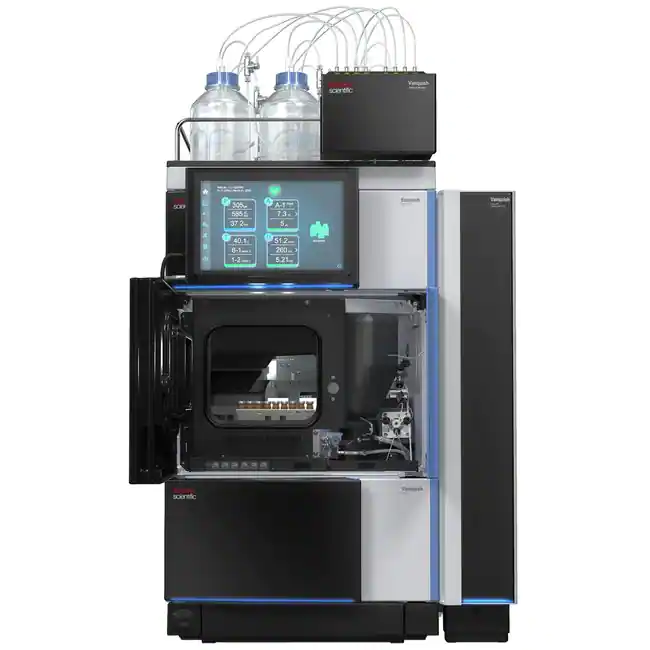Non-Volatile Organic Compounds (NVOC)
1. Biological Effect: Physical and/or Chemical information
2. Turnaround time: 8 weeks
3. Sample Requirements:
ISO
30 cm² (test item < 0.5 mm thick);
15 cm² (test item ≥ 0.5 mm thick);
5 grams each;
5 ml each;
at least 3 test items;
4. Vehicle: polar, semi-polar, non-polar
Analytical technique for particle separation and determination by combining liquid chromatography with mass spectrometry (LC MS/MS). The principle of operation of the “triple quadrupole” detector used in the LC is the same as in the GC – the detector itself differs in size and ionization method, but the design is very similar.
After leaving the chromatographic column, the analytes go to a tandem mass spectrometer (MS / MS), commonly known as a triple quadrupole, which consists of two scanning mass analyzers (quadrupoles) separated by a collision chamber. The fragments selected in the first quadrupole are reacted with an inert gas in the collision chamber, resulting in further fragmentation.
In the process of developing an analytical method, the analyst selects the ions with the highest intensity (MRM).
The device operating in the “MRM” mode is extremely sensitive and the interferences from the matrix are minimal.
Where LC-MS/MS methodology requires careful methodological design to generate analyte specific fragmentation products for monitoring, LC-HRAM (High Resolution Accurate Mass) has helped alleviate the pitfalls of previous methods. As an LC based methodology, analytes typically do not require chemical derivatization for their analysis. In addition, with high resolution accurate mass, the instrument can provide exquisite analytical specificity for the presence or absence of substances.
Another significant benefit of HRAM based detection is the ability to perform retrospective analysis when full-scan data is obtained. With full-scan acquisition, the data acquired during LC-MS acquisition are archived after reporting the presence or absence of known substances, and can be further queried to generate extracted ion chromatograms for analytes of interest as long as the exact mass is known.
ISO 10993-18
This is a study for non-volatile organic compounds from medical device extract. An extraction is performed according to ISO 10993-12 and ISO 10993-18. Procedure makes use of internal standards. Dose of each extract is injected into the LC-MS (liquid chromatography coupled with a mass spectrometer) for analysis and identification.
